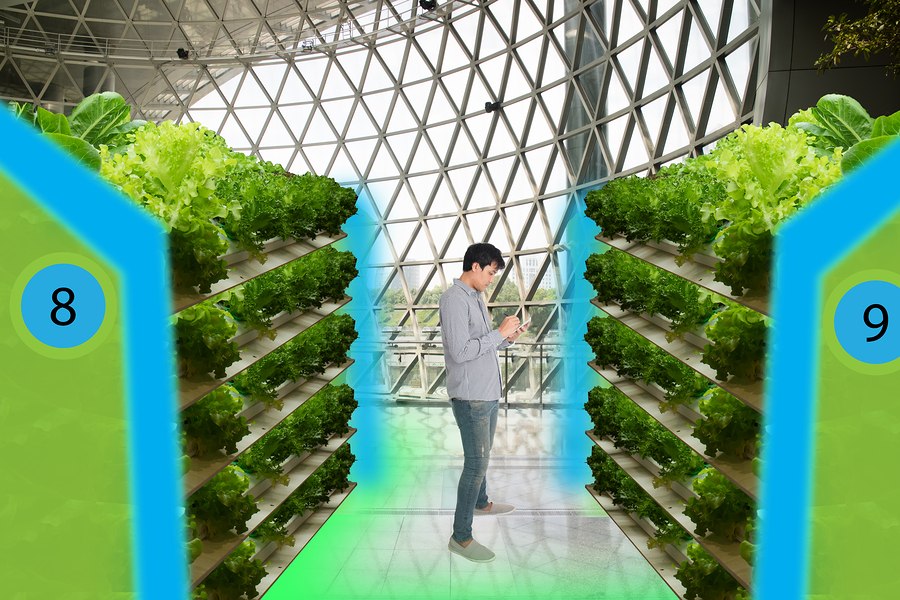Appearing almost a century ago and brought up to date a few years ago, aeroponic cultivation seems to be part of the third green revolution. Could this new form of agriculture help to feed nine billion humans while reducing the negative effects that intensive agriculture has on the environment?
Genesis of aeroponic culture
From the beginning of the twentieth century, botanists have tried the initial form of aeroponic cultivation and wished to study root structure. It was only at the end of the 1980s that one Richard Stoner patented the first aeroponics-style greenhouse, thereby arousing NASA’s interest with the need to cultivate fruits and vegetables in a low-gravity environment. Backed by conclusive scientific studies conducted by this American organization and with unexpected media exposure, aeroponic cultivation has experienced a boost. Unless the real trigger was Dickson Despommier who, at the end of the 1990s, asked his students what the ideal world would look like in 2050. The response was that New York City should be self-sufficient in terms of food. The flat roofs of Manhattan could only feed 2% of the population, so it would be necessary to turn to production inside the buildings (ideally 200 vertical farms 20 stories high to support the needs of New York by 2050!
Cultivation with many benefits
By growing plants with their roots in the air, without any soil, aeroponics seems to only have benefits. Fed by a fine mist of water and nutrients, these plants need less than 10% of the water used in conventional agriculture — interesting when we remember that 70% of the world’s water is related to irrigation, which becomes the leading cause of pollution of water bodies. This improved pesticide-free feeding associated with very precise control of cultivation conditions (temperature, CO2, humidity, leaf shape, etc.) accelerates the growing time (15 days instead of 40), increasing the number of harvests per year (30 instead of 2 to 3 in the field). With this new form of cultivation that doesn’t require fields extending to the horizon, there’s no more clear cutting of forests, no more fruits and vegetables that are six times less nutritious than on harvest day in remote areas, no more rotting of 60% of salads after they have arrived at the supermarket. This local cultivation has quickly seduced the whole world. Soon after publishing of the Dickson Despommier’s book in 2010 on vertical farms, the first aeroponic crops were launched in Korea, Japan and the Netherlands. The only small reservation is consumption of electricity which goes up sharply. Fortunately, some specialists are already looking into the issue and recommending removing the colour yellow from the light spectrum to improve photosynthesis – it is very energy-intensive.
What better technological advance than aeroponic cultivation: improved quality, increased production, reduced pollution, natural resources preserved… The principle behind it is even beginning to be promoted, like aquaponics which permits fish to be bred in symbiosis with plant cultivation. The fact remains that these various methods are accepted by the different players and are becoming more widespread, so that their benefits are really visible.
